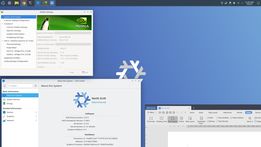hi all. newbie here. have an unusual issue with generations not visible in the Grub menu? I posted the full issue here: NO generations in grub?
I’m at a loss and perplexed by the issue.
I’ve installed afew flatpaks, printer, scanner and nvidia services in nixos 23.05. Im yet to install bluetooth, mount points and samba.
so far, i like the feel of the system. Was a die hard fedora kde (37) fanboy but their quality control by late has disappointed me, especially f38.
Require help and I guess ive posted into the wrong topic ? but any help be appreciated ![]()
